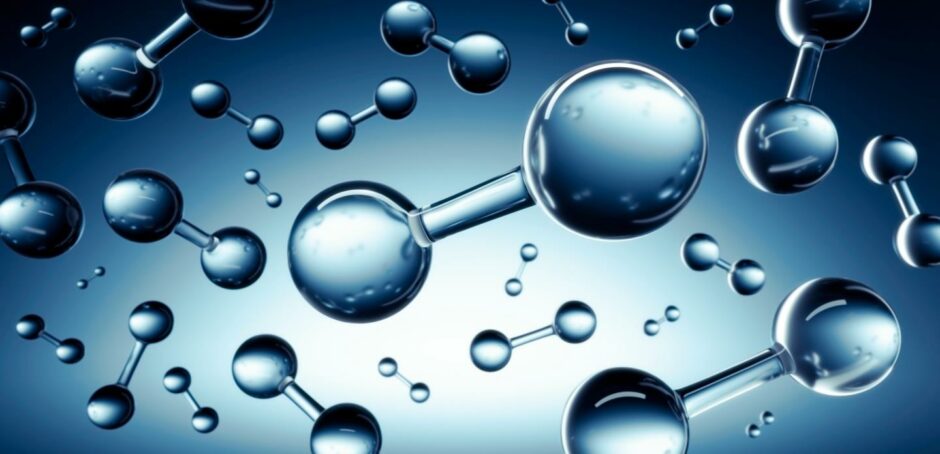
Bruno Roche, Global Head of Energy Transition, ABB Process Automation, Energy Industries, outlines how collaboration can make a world of difference in accelerating innovation in low carbon hydrogen production, making it an affordable, accessible and clean energy source.
For responsible organisations, the imperative to reduce emissions and decarbonise is no longer optional.
Some industries are well on their way to adopting more sustainable operations. But for some heavy industries such as petrochemical, cement and steel – which account for upwards of 22% of global emissions – the challenges are complex. This is where low-carbon hydrogen comes in.
For example, so called “green” hydrogen can be a clean energy solution made from water through the process of electrolysis when powered by renewable energy.
More generally, low-carbon hydrogen, whatever the “colour”, can be a very interesting energy vector to reduce carbon in hard-to-abate industries, such as cement or steel, in transport, such as marine and much more when used as a chemical feedstock.
End-to-end solution
Collaboration is critical if we are to help customers overcome the challenges associated with green hydrogen production. Combining our expertise and solutions into a distinct ecosystem of industry leaders can scale up technologies and reduce production costs to build green hydrogen assets more quickly, cheaply and safely.
For example, we have teamed up with IBM and Worley to fast track and standardise the production of green hydrogen and facilitate the industrial use of green hydrogen. We have done this by designing a first-of-its-kind repeatable solution, Green Hydrogen in a Box. This is an end-to-end template approach to make the design, build and operation of green hydrogen facilities more efficient.
Worley will provide the engineering, procurement and construction expertise across all stages of the project, while IBM will provide systems integration services as well as data framework and management solutions.
ABB brings our 130 years of technological innovation and project engineering excellence. We will provide solutions for electrical infrastructure, automation operations, digitalization, and optimisation of energy management systems.
Together with partners, we intend to leverage our combined expertise to accelerate global market adoption and scalability. Our vision is to help facility owners further decarbonise their operations and turn sustainable solutions into reality.
Overcoming barriers together
Sustainable production of hydrogen does pose significant challenges. Maintaining a reliable power supply while new forms of energy are introduced into the grid is critical.
Scaling up hydrogen production fast enough to meet the necessary supply levels, while simultaneously scaling down the costs to make it viable, is also no small task.
The cost of production remains a significant barrier. At a cost of about $6 per kilogram, green hydrogen was previously the most expensive form of hydrogen to produce.
However, the current high price of gas has significantly reduced the cost differential between blue hydrogen, produced using fossil fuels as an energy source, and green hydrogen. While a welcome reduction in the differential, it may not be sustained over time.
Regarding cost, one major challenge is that sustainable hydrogen production is energy intensive. Therefore, successful operation of a hydrogen plant must be centred around efficient energy and process management.
Scaling up hydrogen production will inevitably require significant capital investment (capex) but it is also essential to consider the operating costs (opex).
The electricity to run a hydrogen plant costs far more than the capex over the long term. In fact, more than 70% of the total operating costs to make 1kg of hydrogen could come from the electricity costs, used to split the water molecule in the electrolysis process. We need to drive these down if we are to enable green hydrogen to scale-up to the needed GW levels.
Dynamic market
The potential and appetite to grow the hydrogen economy is clearly evident, with hydrogen anticipated to supply up to a fifth of global energy needs and generate a market worth US$2.5 trillion by 2050.
IHS Markit estimates capital spending of up to $265 billion in low-carbon hydrogen production by 2030. Electrolysers, which convert water to hydrogen using renewable energy, will take the lion’s share at $165 billion. Meanwhile, $100 billion will be spent on steam methane reforming (SMR) with carbon capture.
At ABB we believe that economically viable green hydrogen is a must-have in the move towards a low-carbon world.
We are complementing our partners’ expertise with our electrification, automation and digital solutions, working relentlessly to drive down the cost of green hydrogen production. Only with such collaboration will it be possible to enable a thriving hydrogen economy and to make hydrogen a key part of our world’s low or no carbon future.
Recommended for you

 © Supplied by ABB
© Supplied by ABB